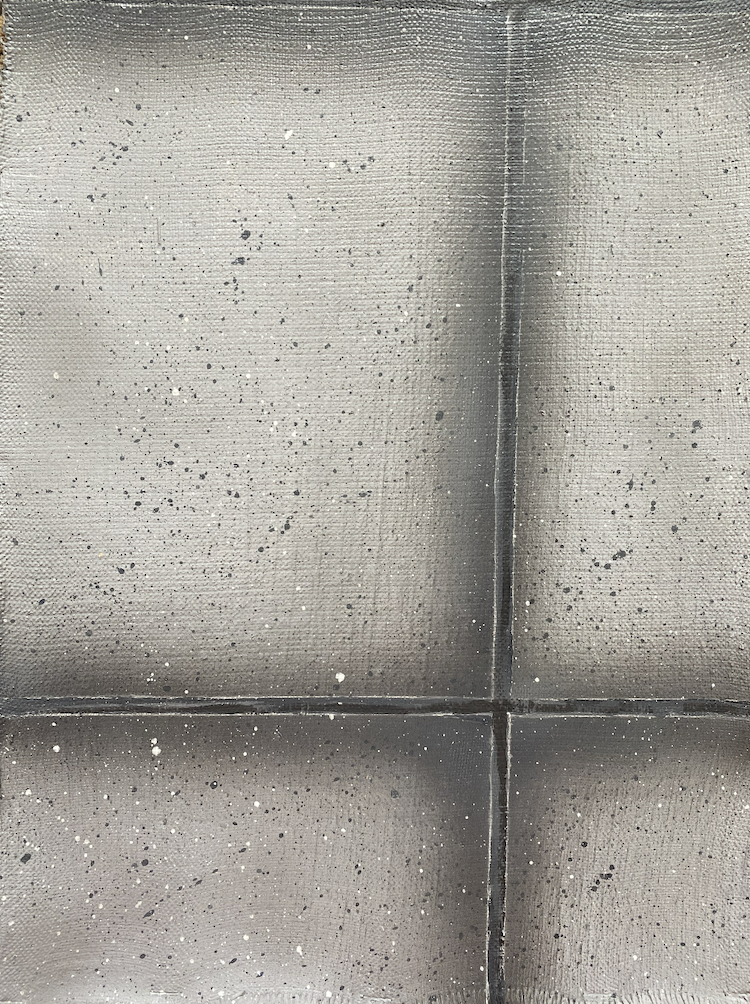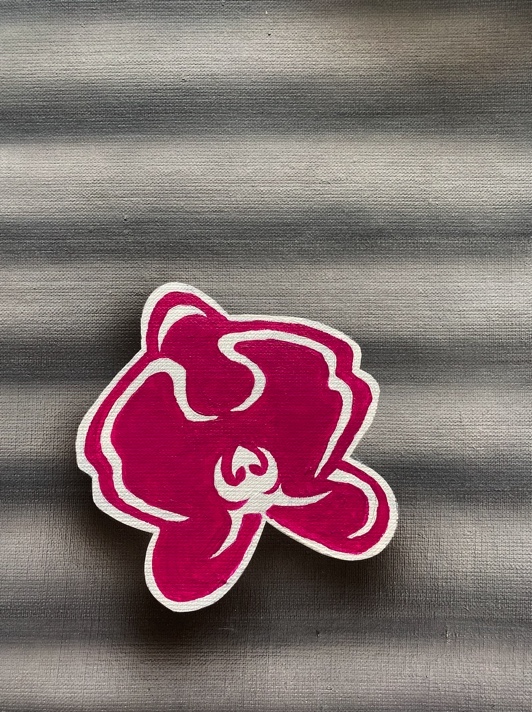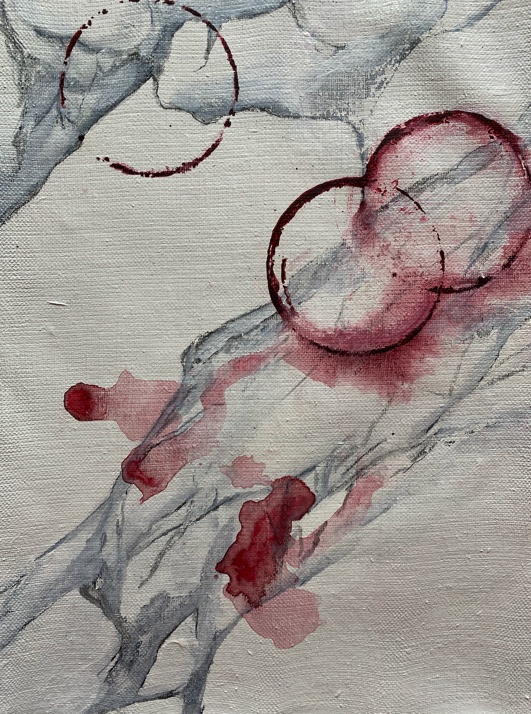Artists are alchemists. This is not to be quasi-mystical about the magical powers that artists like Emelie Luostarinen (b. 1987, Stockholm) might so mysteriously wield, but it is simply to acknowledge that, for as long as artists have been using pigment to transmute spatial and sensory experiences onto standard objects (like walls, crates, or canvases) of unlimited potential, alchemy has been involved.
“Paint is water and stone, and it is also liquid thought.”
I always try to recall this assertion by James Elkins when I look at art. It’s a tacit reminder that everything we see is a construct, but that art is often made to make us think or feel differently than everyday experience. Nothing should be taken for granted, everything matters, and the more we are attuned to the qualities of the work, whether how light dances off the irregular painted ridges paint in dazzling arabesques or if it sinks into a matte surface, the more we appreciate the artist’s intention.
Before the enlightenment in Europe, the notion that artists were alchemist wasn’t remotely fanciful. Because they mixed pigment, artists belonged to the chemist’s guild, and because their craft was conjuring compelling images out of viscous liquid goo, artists share more with wizards than they do with me or you.
After the 18th century, artists increasingly looked to laborers, either of antiquity or in industrial parts of rapidly-expanding cities, as the models upon which to base their identity. Lest we forget that Courbet sought to apply paint how a brick-layer might mortar, or that the Impressionist group of the next generation based their organization on a baker’s guild. Linking the factory and the home, both bread and bricks were the apt metaphors of artwork as it quickly-industrialized and its audience became domestic.
These industrial ghosts of 19th-century myths still haunt places where artists live and work. We like to believe the ragged outskirts of cities can still be creativity’s crucibles, fugitive utopias awaiting our discovery in the dreck of late capitalist sprawl. The idea that 19th century industrial spaces could be repurposed for generative 20thcentury art movements is so deeply ingrained in our consciousness that we don’t even question it anymore. We want artists to transform our mundane reality into their radiant fantasy, setting ablaze what was once beneath our gaze, and I wonder if this is what Emile is up to with this series of fragmented bricolage views and trompe l’oeil care.
Paint spattered over the sfumatesque patina of a grid of wall tiles; trompe l’oeil wine stains on striated marble slabs have their own order, just as crisp floral decals hover hypnotically over a rollgate’s ridges. In each, these contrasts shouldn’t make sense, but do after passing through the warm hominess of Emilie’s studio. Her work is both about and of the things she foliates. Signs that seem designed not to be seen all of a sudden pulsate with urgency, fragmented as they are into new rhythmic dramas through the artist’s scrupulous choices. One way to think about Emelie’s relationship to her studio and its environs is almost that of Old Testament humans naming things for the first time. How helpful would it be to all of us if we too saw the world as Edenic and not as Babel?
Through alchemy, artists benight what was once simply blighted. To bear witness to this process, to spend adequate time with the results, is the closest we the audience can come to making sure their spell works. What better way to describe that process of recognition and empathy than as homecoming? —Ted Barrow
Emelie Luostarinen will be making her San Francisco debut alongside Reniel Del Rosario, Patricia Rubio, Jenny Linse, and Jun Yang in “this must be,” curated by Josefin Lundahl on behalf of The Place, Upper Market Gallery, 4690 18th Street, October 13—15, 2023












